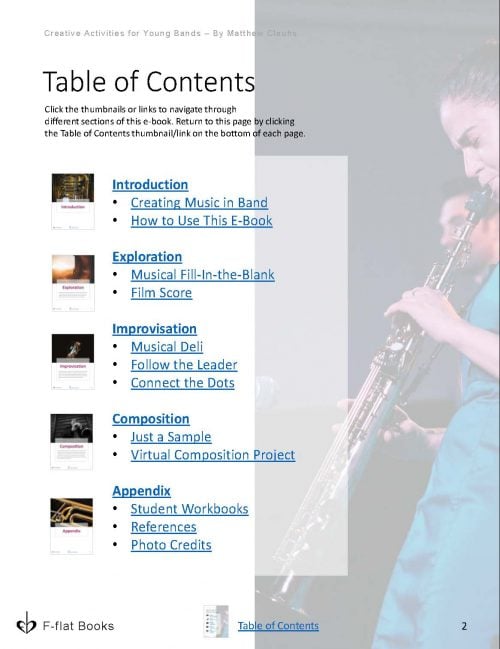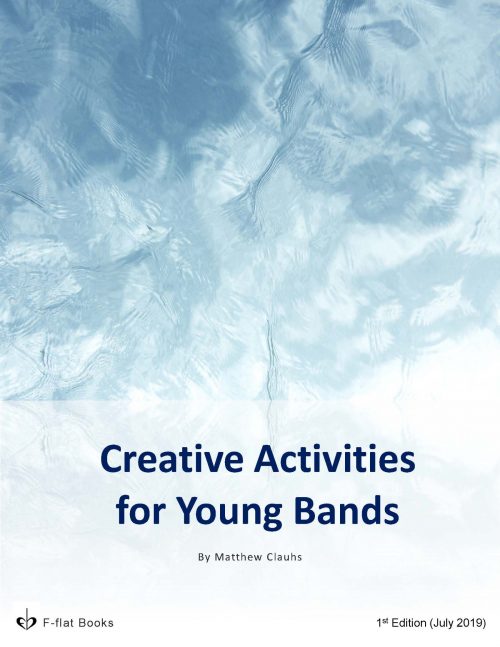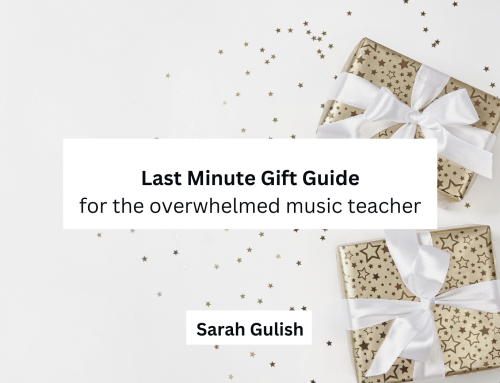Creating music is one of the four artistic processes that guide the national core standards for music education, yet many teachers report they spend very little time teaching improvisation and composition in their classes and rehearsals. Most of the best-selling band methods emphasize notation and theory over improvisation and few resources are dedicated to this important musical skill. As a result, musicians of all ages are often anxious about exploring, improvising, and composing music of their own. Therefore, the goal of Creative Activities for Young Bands is to supplement band method books and notation-based curricula (i.e., preparing for a concert) with a collection of lesson plans, materials, and play-alongs that help foster creativity in young band students.
As an example, the ‘Follow the Leader’ game from Creative Activities for Young Bands (an e-book available through F-flat Books) is my go-to improvisation exercise for every age level and instrumentation. It is presented in the e-book as a beginner activity, using solfege syllables and fingering charts, but could be easily adapted for even the most advanced group of players. In fact, I would use this as a daily warm-up exercise for my high school and college jazz ensembles
The premise is simple. The leader (teacher or student) improvises a one- or two-measure pattern on a single pitch and the class echoes that pattern back in response. I usually start this activity with the verbal cue “I play, you echo.” If the class is successful, the leader gradually adds pitches, one at a time, improvising with stepwise motion. In the next step, the leader invites the class to improvise their own pattern in response, instead of an echo (i.e., don’t follow the leader). The verbal cue “I play, you improvise” is helpful here. Much like the first step, the leader should introduce one pitch at a time, gradually increasing the complexity of the challenge over time.
The PowerPoint and play-along (below) in the e-book focus on the first five notes of the concert Bb major scale, which are the pitches typically introduced in beginning band method books. Feel free to swap out the play-along track with an Aebersold recording or another accompaniment. I frequently use Jamey Aebersold’s Volume 24: Major and Minor, which includes twenty-four play-alongs for major and minor chord qualities in every key. These play-alongs feature live jazz musicians, performing in a variety of styles: swing, latin, funk, etc., which helps to keep the student interest level high. For a variation on this game, invite the class to sing back, using solfege or another syllable system, whatever the leader is playing. This is a great way to assess students’ aural understanding through a live dictation activity.
‘Follow the Leader’ is one of seven exercises featured in Creative Activities for Young Bands. Each activity follows three guiding principles that are important to the success of young creative musicians. The activities are safe, simple, and sequential. The activities are safe because they don’t put students “on the spot” without adequate time to practice and refine their skills. They are simple because they do not require any prerequisite knowledge of notation or music theory. And they are sequential as they introduce new content gradually over time, with increasing complexity. But perhaps the most important guiding principle is to have fun making music together with other musicians.






I really loved this article because it did bring up a good point! Classical musicians, including me, do not normally get much training in improvisation and composition. This is something that I really wish was a part of my education early on because it would have made many of my college classes much more manageable. I have thought about including these skills into my future classrooms, but I was not entirely sure how I would incorporate it into a younger classroom. Thanks for the great tips!